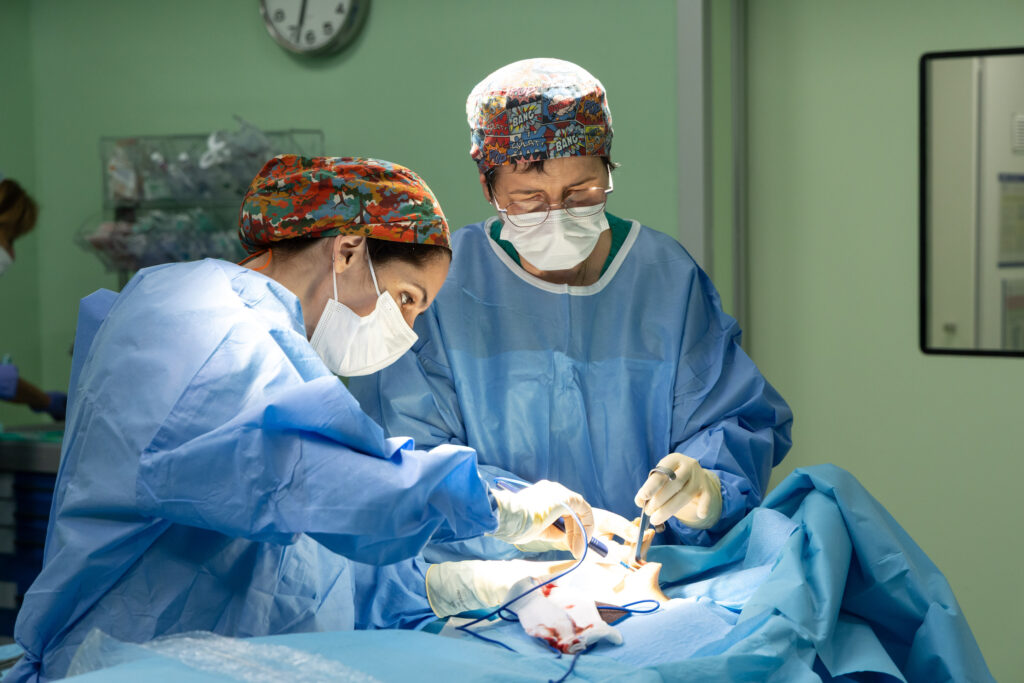Guided Biopsies
What are Guided Biopsies?
Guided biopsies are procedures used to obtain a tissue sample from a suspicious area of the body with greater precision than conventional biopsies. Instead of taking a sample “blindly,” guided biopsies use an imaging or direct visualization technique to locate the suspicious area and direct the needle or biopsy instrument towards it.
What is this diagnostic test used for?
Guided biopsies are used for a wide variety of purposes, including:
- Cancer diagnosis: To confirm the presence of cancer and determine its type and grade.
- Infection diagnosis: To identify the organism causing an infection.
- Diagnosis of inflammatory diseases: To diagnose inflammatory diseases, such as Crohn’s disease or ulcerative colitis.
- Transplant evaluation: To evaluate rejection of transplanted organs.
- Research: Used in research to study different diseases.
Benefits of high technology in Guided Biopsies
Guided biopsies offer a series of key benefits thanks to the technology they use:
- Earlier diagnosis: Can allow for an earlier diagnosis of various diseases, which improves the chances of successful treatment.
- Greater precision: Allows for obtaining tissue samples from specific areas with greater precision, which increases the probability of obtaining a correct diagnosis.
- Less invasiveness: Can be less invasive than surgical biopsies, which reduces the risk of complications and recovery time.
- Greater safety: Can be safer than conventional biopsies, as they allow for avoiding important structures, such as blood vessels or nerves.

How is the procedure performed?
The guided biopsy procedure varies depending on the guidance technique used and the location of the suspicious area:
-
Preparation:
Preparation varies depending on the guidance technique used and the location of the suspicious area. In general, it is important to inform your doctor about any allergies you have and about all medications you are taking, including over-the-counter drugs and supplements.
If you have previous studies, such as MRI, CT, or electroencephalograms, they will be reviewed to get a more complete view of your case.
-
During the test:
A guidance technique (e.g., ultrasound, CT, MRI, endoscopy) will be used to locate the suspicious area. The skin or mucosa will be cleaned with an antiseptic. Local anesthesia will be administered to minimize pain. A needle or biopsy instrument will be inserted through the skin or mucosa and guided to the suspicious area. One or more tissue samples will be taken.
- Verbal and visual memory tasks.
- Exercises to measure your attention and concentration.
- Language and visuospatial skills tests.
- Evaluation of executive functions such as planning, organization, and decision-making.
The duration of the study can vary between 1 and 3 hours, depending on the complexity of the case.
-
After the test:
The needle or biopsy instrument will be removed. Pressure will be applied to the area to stop any bleeding. You will be given instructions on how to care for the area and what signs of complication to watch for.
Recommendations for the test
Remember that it is important to follow these recommendations to ensure the quality of the study and your comfort:
- Report any discomfort: Inform your doctor about any discomfort or pain you experience during the procedure.
- Follow preparation instructions: Carefully follow all preparation instructions provided by your doctor or hospital staff.
- Inform about allergies and medications: It is important to inform your doctor about any allergies you have and about all medications you are taking, including over-the-counter drugs and supplements.
Are there any risks?
Guided biopsies are generally safe, but like any medical procedure, they have some minimal risks to consider:
- Injury to adjacent organs or structures: In rare cases, adjacent organs or structures may be injured during the biopsy.
- Bleeding: There may be bleeding at the biopsy site.
- Infection: There is a risk of infection at the intervention site.
- Pain: You may experience localized pain where the test was performed.
For your test to proceed smoothly, we ask that you arrive in advance of your scheduled time. This will allow us to complete the necessary administrative and clinical preparation.
Before the test, we will provide you with the Informed Consent form, a document with important information that you must read and sign.
If your appointment is for a Magnetic Resonance Imaging (MRI), it is crucial that you inform us about the presence of pacemakers, metallic objects, prostheses (including dental), tattoos, or medication infusion devices, such as insulin pumps.
These diagnostic tests are very safe, but as with any medical procedure, there is a minimal possibility of incidence.